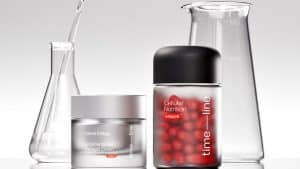You may have noticed, in all our previous talk of vitamins, that it seems the people who named them weren’t great at the alphabet. Or counting. You go from vitamin A to vitamin E, then jump all the way to K. There are eight B vitamins, but somehow the numbering system misses 4, 8, 10 and 11, so you finish on 12. What’s going on?
Well, it doesn’t mean scientists just decided they didn’t like certain letters and numbers. Generally, when you see one of those gaps, it means there used to be another vitamin there, but later the experts realized that chemical wasn’t a vitamin at all. That might mean that it’s found in the body naturally, not absorbed from outside, or even that it’s not essential to human life.
Take vitamin F. It was discovered in 1923. Just a few years later, in 1929, an experiment showed that it wasn’t a vitamin at all. It was actually two types of fat. They’re alpha-linolenic acid and linoleic acid, which together are now known as the essential fatty acids. We can’t live without them, and we can’t produce them ourselves, but they’re still not vitamins.
Other letters in the vitamin alphabet actually turned out to be subcategories of B vitaminS. Vitamin G is now riboflavin, or vitamin B2. H is biotin, otherwise known as B7. J is flavin, also part of B2, but also catechol, which isn’t essential at all. Folate (B9) and niacin (B3) used to be vitamins M and PP.
There were once two L vitamins, but one was non-essential anthranilic acid and the other 5′-Methylthioadenosine, which is what’s called an RNA metabolite. Similar is the protein metabolite S-Methylmethionine, once known as vitamin U. Other non-essentials included vitamin P (flavonoids) and vitamin S (salicylic acid).
(It should probably be mentioned that in biology, essential nutrients are the ones the body needs to survive but can’t produce itself. Most of them are ingested through food.)
As for the B vitamins, B4 and B8, otherwise known as adenine and adenylic acid, both turned out to be DNA metabolites that can be created within the body. Carnitine was known as BT, but it turns out it’s something else the body can produce itself.
It all goes to show just how complicated the body can be and how even the experts always have something to learn.




